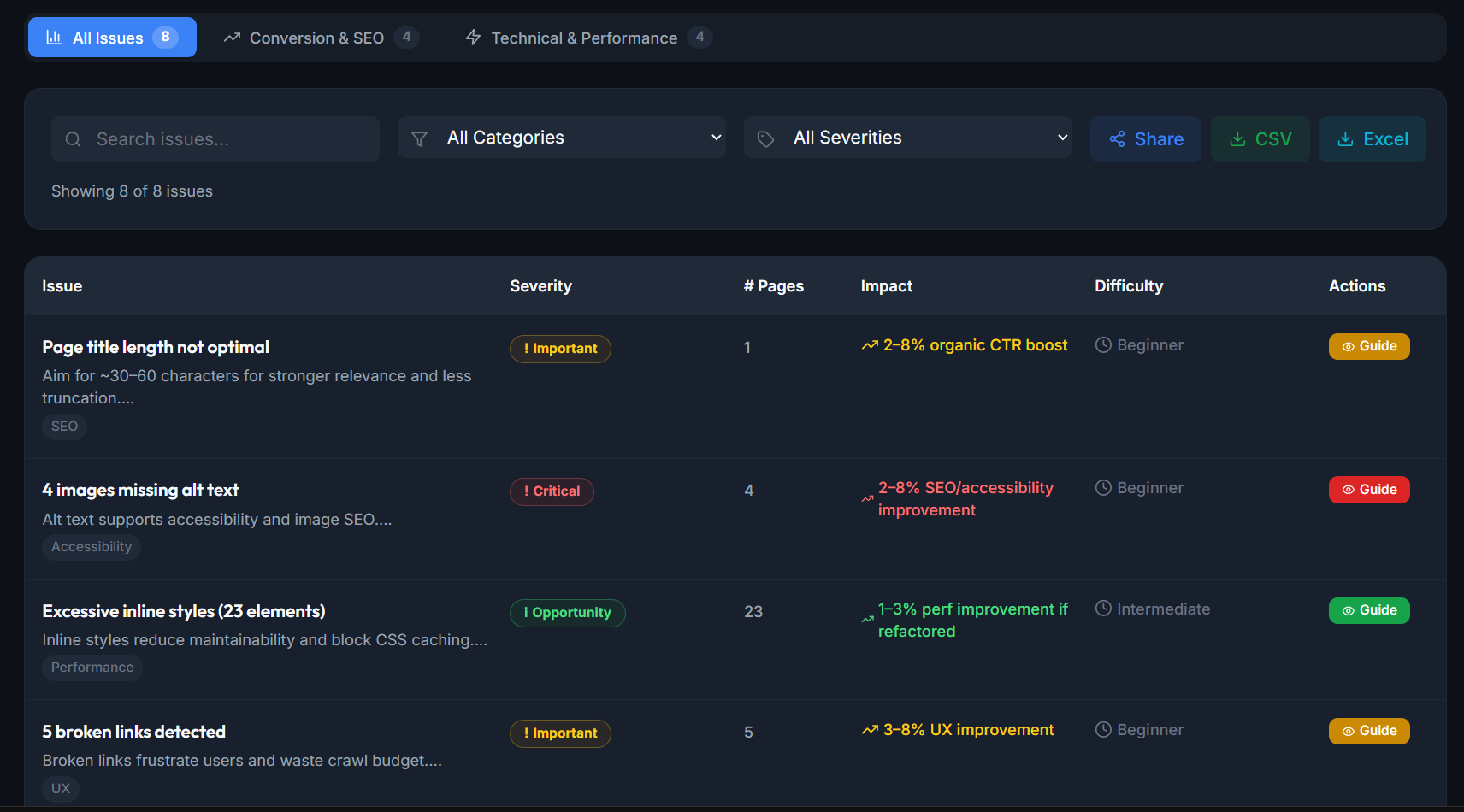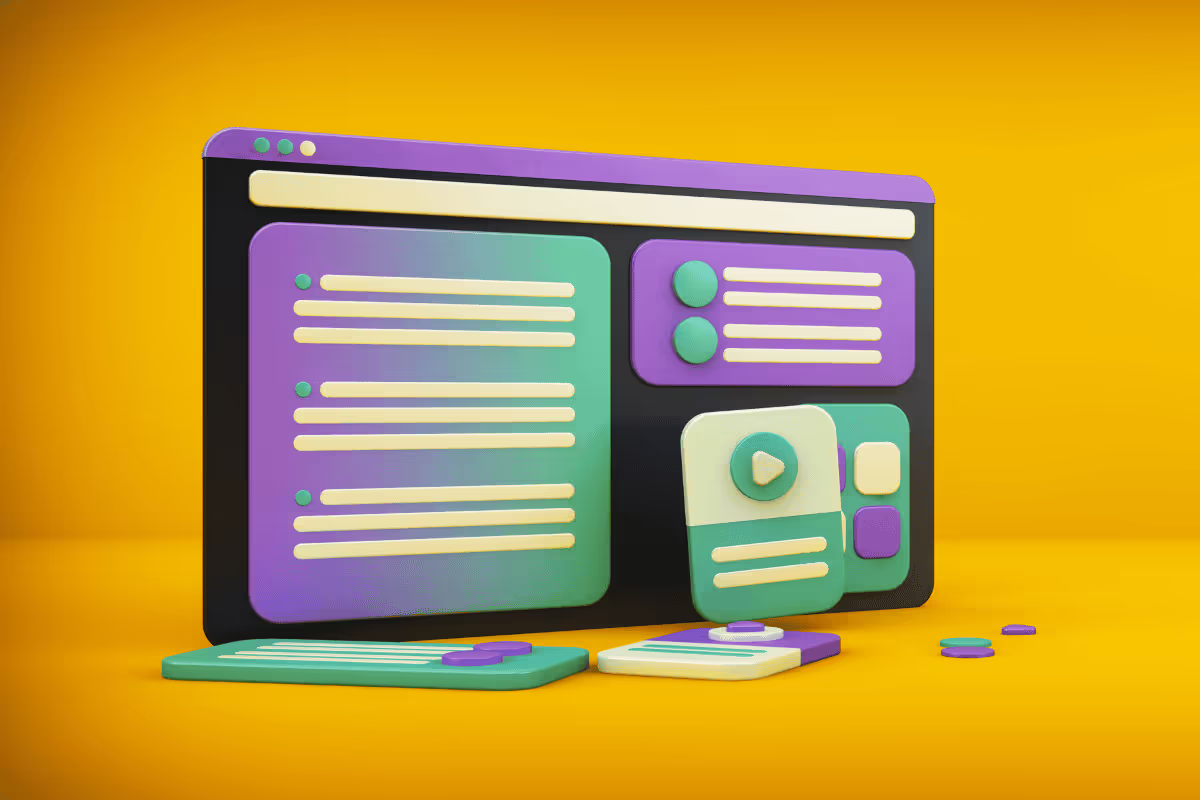When it comes to the bespoke website design process, there is no one-size-fits-all answer. Every business is different, with unique needs and goals. It’s important to work with professionals who understand your specific requirements and can create custom websites that meet those needs.
Find the right freelancer or a web design agency in London, that can help you create an online presence that's perfect for your business and is affordable in price. Read our guide and learn more about what's bespoke web design.
🌟 Definition Of Bespoke Website Design
Bespoke website design refers to web design services that are specifically tailored to the needs of a single client. Bespoke means it is not a template website or pre-made design that is used for multiple businesses. Instead, it is a completely unique design that is created from scratch for the individual client.
The idea is to create websites that perfectly represent their business and meet their specific needs. Since the world is constantly changing, it is important to be different and design a bespoke website that can keep up with the latest trends and technologies.
📂 Definition Of Template Website
Involves using pre-made website templates that are available for purchase or free online. These templates can be easily customized with the client's content and branding, allowing for a quick and cost-effective way to create a professional website.
Though template websites are convenient and affordable, they lack the uniqueness and customization that bespoke websites offer. Template websites may also be limited in their functionality and design options compared to bespoke websites.
-------------------------------------------------------
🔄 Bespoke Web Development Process
Creating a bespoke web solution is not a quick or easy process. It can take weeks or even months to create a design that is perfect for the clients. Collaborating & contacting clients is the first step in the bespoke web design process.
Step 1. Discovery Call
- Conversation between the client and the operations/sales manager to understand the business, the project goals, the target audience and any unique requirements.
- It helps the web agency to clarify details and submit a proposal - price, timeline, approach.
-------------------------------------------------------
Step 2. Strategy Workshop
- After the proposal is accepted a strategy workshop is scheduled.
- This session helps define the website’s structure, features, content priorities and user experience.
- Key decisions are made here regarding site layout, navigation, branding direction and any technical considerations.
-------------------------------------------------------
Step 3. Research & Analysis
- The agency gathers insights about your industry, competitors and audience expectations.
- This informs the overall design strategy and ensures the final product not only looks great but performs well.
-------------------------------------------------------
Step 4. Wireframing & Visual Design
- Based on the research and the workshop, the studio creates wireframes and detailed page designs using Figma.
- These layouts define structure, content hierarchy and visual direction.
- This stage allows for feedback and revisions before development begins.
-------------------------------------------------------
Step 5. Website Development
- Once the designs are approved, web developers begin building the website from scratch.
- Every element is coded to match the design and functional requirements.
- Includes responsiveness across devices, smooth performance and any specific integrations or features needed.
-------------------------------------------------------
Step 6. Content & SEO Optimization
- It involves creating high-quality content that is optimized for search engines.
- This stage include keyword research, meta-tag optimization, and other SEO techniques to improve the website's visibility online.
-------------------------------------------------------
Step 7. Performance Testing
- The site is thoroughly tested on different browsers and devices.
- Checking responsiveness, functionality, loading speed and any interactive elements.
- Bug fixes and final adjustments are made based on internal reviews and client feedback.
- Utilizing a website proofing tool during testing can streamline communication, making it easier to identify and resolve visual or functional discrepancies.
-------------------------------------------------------
Step 8. Domain Connection & Launch
- Once the website has been tested and approved by the client, it is ready for launch.
- Making the website live and accessible to the public - includes activating the domain name, setting up hosting and ensuring proper SEO optimization.
-------------------------------------------------------
Step 9. Site Maintenance
- After launch, ongoing support/maintenance packages are often recommended to keep the website secure, up-to-date and performing well.
- This may include content updates, plugin or CMS updates, performance monitoring, and regular backups.
✅ Benefits Of Bespoke Web Design
A) User Experience (UX Design):
- Having a custom-made site ensures that you don’t need to deal with redundant code that comes with generic templates.
- Every asset on your website can be tailored to provide a quicker and more efficient user experience.
- Fonts can be chosen specifically to complement your brand, alongside other design elements, making navigation a breeze.
B) User Interface (UI Design):
- When looking for a website, a tailor-made design and development approach can provide a unique theme that stands out from generic template designs.
- By focusing on the user interface (UI), businesses can ensure an intuitive and user-friendly experience for their customers, ultimately leading to higher engagement and conversion rates.
C) Ahead of Competition:
- If your organisation wants to stay ahead of the competition and achieve its business goals, going bespoke with your website is the way to go.
- This means it’s tailored specifically to your needs and not a cookie-cutter template.
- If you’d like a unique new website that stands out without the limitations of an existing website, bespoke design is the answer.
D) Highly Optimized:
- When it comes to digital marketing, a fully bespoke website can have a significant affect on the success of a business.
- A studio that specializes in bespoke web design can create one that is designed specifically for your brand and target audience.
E) Personalized & Up-To-Date:
- By creating a website that is customised to your brand's logo and brand elements, you can generate a unique look and feel.
- Keeping your website up-to-date with the latest design trends and terminology is crucial in today's fast-paced digital world.
- Unlike off-the-shelf platforms like WordPress, bespoke websites are always going to stand out.
F) Increased Brand Awareness:
- Customisation is a key benefit of custom development as it allows companies to have a website built using their specific business needs.
- This investment of time and money results in an intuitive user experience that is on-brand, also these websites are often more effective in showcasing a company's unique qualities and values.
💷 Bespoke Website Cost In UK
The price of a personalized website can fluctuate significantly based on the intricacy of the task and the extent of website design services needed. Normally, you can anticipate spending between £4,000 to £8,000 for a tailored website design compared to a standard web development project.
Nevertheless, it is crucial to communicate your individual requirements with a web design company or independent contractor to receive a precise quote.
General price guide for tailored-made website development:
- Portfolio Website: £400 - £500/page
- eCommerce Store: £500 - £600/page
- Webflow Development: £600 - £800/page
- WordPress Design: £300 - £500/page
Freelancer vs Web Agency Features
If you’re looking for a professional, custom website, hiring a freelancer or a web design agency can be a great solution. Both options offer the expertise to deliver a tailored web experience, covering everything from design to development and implementation. However, your choice will depend on your specific needs, budget, and project scope.
🚀 Web Agency
Agency Pros:
- Expertise & experience: Web companies typically have a team of professionals with diverse skills and experience, ensuring that your project will be completed efficiently and effectively.
- Accountability: With a web agency, there is a clear point of contact in case of any issues or questions, providing a level of accountability that may be lacking with a freelancer.
- Scalability: Development agencies have the capacity to take on larger projects and have the resources to scale up as needed, making them a good choice for businesses looking for long-term solutions.
- Support & maintenance: Many agencies offer ongoing support and maintenance services, ensuring that your website remains up-to-date and functioning properly.
- Quality Assurance: They often have strict quality control processes in place to ensure that the final product meets industry standards and best practices.
Agency Cons:
- Higher cost: Agencies typically charge higher fees compared to freelancers, making them a less cost-effective option for smaller businesses or startups.
- Turnaround: Due to their project workload and the layers within an agency, the process from start to finish can be slower compared to an individual freelancer.
- Communication: Working with a website agency often means communicating through project managers rather than directly with the developer.
- Working hours: Web design agencies typically operate within standard business hours and may have less flexibility in terms of making quick changes or updates outside of these hours.
- Availability: Web studios may have limited availability, especially during peak periods or when they have multiple projects running simultaneously.
-------------------------------------------------------
🗣️ Website Freelancer
Freelancer Pros:
- Cost-effective: Freelancers tend to charge lower rates compared to web design agencies, making them a cost-effective option for smaller businesses or startups.
- Flexibility: They often have more flexibility in terms of working hours and project timelines, making it easier to accommodate your schedule and needs.
- Personalized service: Working with a freelancer allows for a more personalized and hands-on approach, as you are likely to work directly with the person handling your project.
- Specialized expertise: Many freelancers specialize in specific areas of web design, such as graphic design or e-commerce development, allowing you to find a professional with the expertise you need.
- Quick turnaround: Freelancers may be able to complete your project faster than a web design agency, as they typically have fewer clients and projects to juggle at once.
Freelancer Cons:
- Availability: May have other clients and projects, leading to potential delays in completing your project if they are not readily available.
- Resources: They may not have access to the same resources, tools, and expertise that a web design agency has, potentially limiting the scope and quality of your project.
- Lack of oversight: Working with a freelancer may require more hands-on management on your end, as they may not have the same level of oversight and quality control as a web design agency.
- Risk of inconsistency: Not always reliable or consistent in their work, leading to potential setbacks and frustrations during the project.
- Scalability: Freelancers may not be able to handle large-scale projects or accommodate sudden changes in scope as effectively as a web design agency.
⚙️ Content Management Systems - Web Development
In order to make site updates and changes, most businesses will need a content management system. A CMS is a software application that allows you to create, edit, and manage the content of your website. It’s an essential tool for any business that wants to be able to update their websites on their own, without having to contact a web developer or experts.
1. WordPress
- WordPress is one of the most popular CMSs services in the world.
- Web development is free and open-source
- It has a large community of users, bespoke website developers and customers.
- To build high-quality WordPress websites you don't have to be a genius with vast knowledge, watch YouTube designers, collect some ideas and use WP plugins.
-------------------------------------------------------
2. Webflow
- Cutting edge builder that allows users to design and build responsive websites visually, without needing to touch any code.
- It offers a variety of templates and customization options, making it a popular choice for those looking for a more flexible and customizable website builder.
-------------------------------------------------------
3. Squarespace
- Squarespace is another popular website builder platform that offers a variety of templates and customization options.
- It is known for its user-friendly interface and sleek design options, making it a great choice for those looking to create a professional-looking website without needing to hire a designer.
-------------------------------------------------------
4. Wix
- Wix is a drag-and-drop website builder that offers a range of templates and customization options.
- It is known for its ease of use and flexibility, making it a popular choice for those looking to create a website quickly and easily.
-------------------------------------------------------
5. Joomla
- Joomla is another popular CMS service that is free and open-source.
- The company has a modular architecture, which allows you to tailor it to your specific needs.
- Good for marketing and branding in line with the growth of the company.
-------------------------------------------------------
6. Drupal
- Drupal is also a popular CMS service, and it is free and open-source.
- It has a large user base, a great support team and a wide range of features.
- Available to any business.
-------------------------------------------------------
7. Shopify
- Shopify is a top eCommerce platform that has lots of customers or clients like small business owners and individuals.
- The service is not free, but it has a lot of features that make it a popular choice for online stores.
- It’s also very user-friendly, which makes it a good option for new businesses that are new to selling.
-------------------------------------------------------
🖥️ Bespoke Website Examples
As a professional and custom website design company, Fit Design build high quality sites that are tailor-made to suit our clients' specific needs and goals.
- Consultancy: IbSherpa - Sleek and modern website that features a clean and professional design with easy navigation and clear calls to action.
- Interior design: Livit - We created a visually stunning site that showcased their portfolio of projects, client testimonials and design philosophy.
- Music agency: Altaura - The site featured animations, interactive elements and a dynamic layout to reflect the agency's innovative and artistic approach.
- Beauty & makeup: Doll Smash - Selling online never looked so good with this elegant and user-friendly e-commerce site that showcases their range of beauty and makeup products.
- Photography: Tabat - A sleek and sophisticated website that highlights the photographer's stunning portfolio and services in a visually appealing way.
💡 Conclusion - Tailored Website Design
Customized design is a process that involves the creation of a distinct website for businesses, individuals, or self-employed. The development of a tailor-made website can take several weeks or even months as it is specifically tailored to meet the client's unique needs.
Expect the cost of a custom website to vary greatly depending on the level of complexity and the extent of exceptional service required. When hiring a freelance web designer or a website design agency, it is a good idea for the company to clearly define the specific requirements in detail and thoroughly assess the services offered by the web designer.
It is advisable to get in touch and consult with a web developer or a website design agency to determine the best content management system (CMS) for your website.
Custom Website Design - Questionnaire
What Does Bespoke Mean In Design?
"Bespoke" in design refers to something custom-made or tailored to a specific individual's preferences or requirements. It involves creating a unique and personalized piece that is designed to fit a particular brand without using pre-built or template pages.
How Long Does It Take To Build A Bespoke Website?
Normally, it takes around 6 - 10 weeks to build a bespoke website from scratch, depending on the complexity and size of the web project. This includes designing the site [sitemap, Figma], building the web pages and adding all of the necessary content and functionality.
Do I Need A Bespoke Website?
It depends on your goals. If you want a website that truly reflects your brand and offers tailored functionality, a bespoke solution is ideal. But if your needs are basic and your budget is tight, a template-based site might be enough - for now.
Should I Build A Website Myself Or Hire Someone?
It ultimately depends on your budget, time and mostly technical skills. Building a website yourself can be cost-effective, but it requires some knowledge and can be time-consuming. Hiring someone to build a website for you can save you time and ensure a professional result just like you would consider to call a plumber if your pipe is leaking.
What are the three golden rules of web design?
1. Keep It Simple: A clean, uncluttered layout improves user experience. Focus on clear navigation, minimal distractions and easy-to-read content.
2. Design for Users First: Understand your target audience and design with their needs in mind. Prioritize usability, accessibility and mobile responsiveness.
3. Consistency Is Key: Use a consistent style for fonts, colors, buttons and layouts across all pages. This builds trust and makes your site feel more professional.









